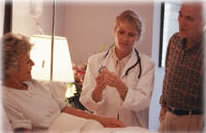 Leg Stress Fracture, Tibia Leg Stress Fracture, Tibia |
 Liver Injury Liver Injury |
 Neck Dislocation Neck Dislocation |
 Neck Fracture Neck Fracture |
 Neck Sprain Neck Sprain |
 Neck Strain Neck Strain |
 Nose Injury Nose Injury |
 Pelvis Strain, Hip-Trunk Pelvis Strain, Hip-Trunk |
 Pelvis Strain, Ischium Pelvis Strain, Ischium |
 Perineum Contusion Perineum Contusion |
 Rib Dislocation Rib Dislocation |
 Rib Fracture Rib Fracture |
 Rib Sprain Rib Sprain |
 Rib Strain Rib Strain |
 Shoulder-Blade (Scapula) Bursitis Shoulder-Blade (Scapula) Bursitis |
 Shoulder-Blade (Scapula) Contusion Shoulder-Blade (Scapula) Contusion |
 Shoulder-Blade Fracture, Acromion Shoulder-Blade Fracture, Acromion |
 Shoulder-Blade (Scapula) Fracture, Coracoid Process Shoulder-Blade (Scapula) Fracture, Coracoid Process |
 Shoulder-Blade (Scapula) Fracture, Glenoid Fossa Shoulder-Blade (Scapula) Fracture, Glenoid Fossa |
 Shoulder-Blade (Scapula) Fracture, Neck Shoulder-Blade (Scapula) Fracture, Neck |
 Shoulder-Blade (Scapula) Strain Shoulder-Blade (Scapula) Strain |
 Shoulder Bursitis, Gleno-Humeral Shoulder Bursitis, Gleno-Humeral |
 Shoulder Bursitis, Subacromial Shoulder Bursitis, Subacromial |
 Shoulder Contusion Shoulder Contusion |
 Shoulder Dislocation Shoulder Dislocation |
 Shoulder Sprain, Acromio-Clavicular Shoulder Sprain, Acromio-Clavicular |
 Shoulder Sprain, Gleno-Humeral Shoulder Sprain, Gleno-Humeral |
 Shoulder Strain Shoulder Strain |
 Shoulder Tendinitis & Tenosynovitis Shoulder Tendinitis & Tenosynovitis |
 Skin Abrasion Skin Abrasion |
 Skin Laceration Skin Laceration |
 Skin Puncture Wound Skin Puncture Wound |
 Spine Fracture, Lower Thoracic & Lumber Region Spine Fracture, Lower Thoracic & Lumber Region |
 Spine Fracture, Sacrum Spine Fracture, Sacrum |
 Spine Fracture, Tailbone Spine Fracture, Tailbone |
 Spine Stress-Fracture, Neck or Back Spine Stress-Fracture, Neck or Back |
 Spleen Rupture Spleen Rupture |
 Thigh-Bone Fracture Thigh-Bone Fracture |
 Thigh Contusion Thigh Contusion |
 Thigh Hematoma Thigh Hematoma |
 Thigh Injury, Hamstring Thigh Injury, Hamstring |
 Thigh Strain, Quadriceps Thigh Strain, Quadriceps |
 Thigh Strain Thigh Strain |
 Thumb Fracture Thumb Fracture |
 Thumb Sprain Thumb Sprain |
 Toe Dislocation Toe Dislocation |
 Toe Exostosis Toe Exostosis |
 Toe Fracture Toe Fracture |
 Tooth Injury & loss Tooth Injury & loss |
 Wrist Contusion Wrist Contusion |
 Wrist Dislocation, Lunate Wrist Dislocation, Lunate |
 Wrist Dislocation, Radius or Ulna Wrist Dislocation, Radius or Ulna |
 Wrist Ganglion Wrist Ganglion |
 Wrist Sprain Wrist Sprain |
 Wrist Strain Wrist Strain |
 Wrist Tenosynovitis Wrist Tenosynovitis |
|
|
Tooth Injury & loss
Damage to a tooth severe enough to separate it completely from the gum and bone without fracture. Children whose front teeth have short, slender roots are most likely to lose teeth through injury.
Body Parts Involved
- Teeth.
- Bones that hold teeth.
- Gums and soft tissue surrounding the tooth, including nerves, blood vessels and covering to bone (periosteum).
Causes
Direct blow to the tooth and gum.
Signs & Symptoms
- Missing tooth.
- Pain and bleeding from the tooth site.
- Swelling of gums soon after injury.
Treatment
Note:- Follow your doctor's instructions. These instructions are supplemental.
First Aid
-
Find and wash the missing tooth or teeth.
- Replace the tooth in Its socket as soon as possible.
- If you cannot replace the tooth in its socket, wash it and keep it wet in a wet cloth until you reach a dentist or doctor. Put a moist cloth in the empty socket and have the patient bite on it.
- Go to the dentist or emergency room immediately. Hurry! The longer the tooth stays out of the mouth, the less the chance of saving it.
Continuing Care
The dentist or oral surgeon will:
- Cleanse the socket.
- Remove the nerve from the tooth and fill the root canal with a plastic like material before the tooth is replaced.
- Replace the tooth in its socket.
- Anchor the tooth to neighboring teeth with wire or plastic. The tooth must be held in place for 6 to 8 weeks.
Home care after replantation:
- Don't rinse your mouth, spit, smoke, or suck on straws for 24 hours after tooth replantation.
- After 24 hours, brush your other teeth often with a soft toothbrush. A clean mouth heals faster.
Don't brush the injured tooth until you have clearance from your dentist.
- Beginning 24 hours after surgery, rinse your mouth every 1 or 2 hours with a solution of 1/2 teaspoon salt in 8 oz. of lukewarm water.
- Don't bite down on the affected tooth until healing is complete.
Medication
- You may use non-prescription drugs such as acetaminophen for minor pain.
- Your doctor may prescribe:
Pain relievers. Don't take prescription pain medication longer than 4 to 7 days. Use only
as much as you need.
- Antibiotics to fight infection.
- Mouthwashes.
Home Diet
Adequate food and fluid intake following surgery will promote more rapid healing. If you can't avoid putting pressure on the tooth by eating your normal diet, follow a liquid high-protein diet for 2 or 3 days. Avoid all alcoholic beverages during healing.
Diagnostic Measures
-
Your own observation of symptoms and signs.
- Medical history and physical exam by your dentist or oral surgeon.
- X-rays of the mouth and jaw to detect additional injuries.
Prevention Tips
Wear a helmet, strong face guard and mouthpiece whenever possible during contact sports.
|
|





